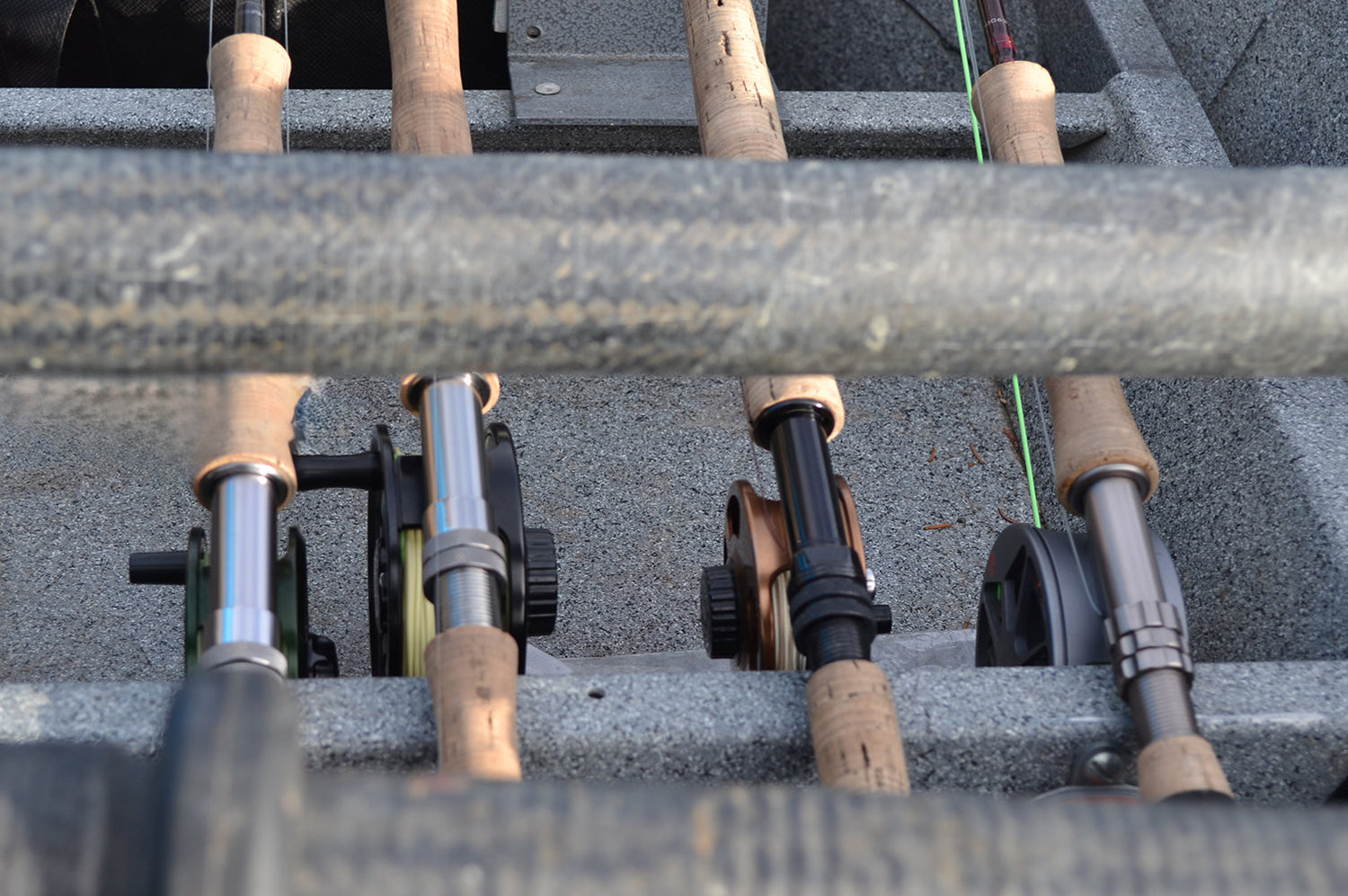Fly Fishing Virginia's Stoney Creeks
Fly Fishing Virginia's Big Stoney Creek and Little Stoney Creek near Edinburg, VA
Big Stoney Creek along Route 675 west of Edinburg in Shenandoah County is one of the finest stocked trout streams in Virginia. There are primarily two factors which contribute to this fishery that make it ideal for both the trout and the angler. Shenandoah Valley's Big Stoney Creek runs over many miles of rich limestone which has a positive influence upon both the aquatic insects and the trout.
Secondly, the abundance of springs that enter the stream throughout its length cool it during the summer to provide a comfortable environment for the trout, while warming it early in the spring and late in the fall which prompts the trout to feed more aggressively than they would otherwise.
Some of the fastest action takes place from March to June from Wakeman's Grove upstream through Columbia Furnace and west for the next several miles.
In early March the best fishing is usually with streamers like the Olive Strymph, Black Strymph and Black Woolly Bugger all in size 10 with nymphs like the Casual Dress Nymph, Mr. Rapidan Bead Head and Prince Bead Head in sizes 12 and 14.
By the second week of April, very heavy hatches of mayflies and caddisflies have the trout looking up and it is possible to get good action with drys such as the Olive Elk Hair Caddis, the Mr. Rapidan Dry and the March Brown Dry all in sizes 14 and 16.
During the summer I go to the sections of the stream below the largest springs. On hot summer days I get great action by crawling into the tail of the long flat pools and fishing a size 20 Mr. Rapidan Ant on a Classic 9ft 6X Leader to trout cruising about the pools to feed on natural terrestrials.
There are several miles of excellent spring fed water just upstream from Columbia Furnace. The stream here is composed of long, flat pools and runs separated by gentle riffles. It is not at all unusual to spot several rising trout in the flat pools during the summer as you drive up the road beside the stream. Of course, there was the time I came to a screeching halt when I spotted these risers and proceeded to spook them all in my haste to get into the stream. I know you will do better.
A short distance upstream Little Stoney Creek, an excellent wild brook trout stream, enters Big Stoney Creek. Little Stoney Creek originates in the George Washington National Forest high on Great North Mountain.
The most popular access is to turn north off Route 675 onto Forest Service Route 92 about three miles east of the Wolf Gap Recreation Area. Follow Route 92 down the mountain to where it crosses Little Stoney. At this point you can either fish upstream or, as most anglers prefer, hike down the trail beside the stream and fish back up to the car.
About 1985 stream studies by the Virginia Department of Game and Inland Fisheries on Little Stoney Creek prompted a combined effort with the George Washington National Forest to add limestone to the stream. The results were dramatic. The trouts' growth rates and reproduction success and the density of aquatic insects all improved greatly. Utilizing the chemistry department at James Madison University to help monitor the stream limestone has bee added to the stream as needed. The trout populations, and thus the anglers, have benefited greatly from these efforts.

Little Stoney Creek produces good fishing from March until November if the water level holds up well. Years in which there is little rain during the summer the stream may become quite low and the trout exceedingly wary. However, conditions usually improve in the fall and one can expect good fishing.
The Woodstock Reservoir is located about two miles downstream from where Forest Service Route 92 crosses Little Stoney Creek. There is an excellent trail all the way down and the hiking is easy. To take advantage of some unusual fishing for Virginia you can carry a float tube down to the reservoir and launch it at the upper end and fish for cruising wild brook trout throughout the reservoir.
A very enjoyable tactic is to fish the tree-line areas with small dry flies. You can go one on one with rising trout or you can just fish the productive-looking areas.
An alternative tactic is to search out the deeper water with small streamers such as Black Strymph size 10 or Olive Marauder size 12. In the deepest water a fast sinking-tip fly line can help you get your flies to the bottom.
-

Learn Fly Fishing at Murray’s Fly Shop: Classes, Workshops & Schools
Welcome to Murray’s Fly Shop – Your Fly Fishing Learning Hub At...
-

Featured Flies of the Month
Harry Murray's recommended fly list for this time of the year. (December...
-

Fly Fishing Rod Outfits
Fly Fishing Rod and Reel Outfits for Smallmouth Bass fly fishing, Trout...




